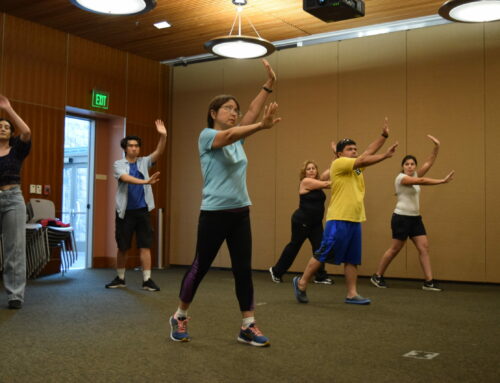Santa Clara County health officials recommend most residents continue to wear masks indoors in public
![]()

By Staff Reports
Bay Area health officers are urging the public to take precautions as COVID-19 levels start to rise.
The Bay Area now has California’s highest COVID infection rates, according to a Santa Clara County press release from May 13. The current wave is fueled by highly contagious Omicron subvariants. Bay Area counties are seeing increases in reported cases, levels of virus in sewer sheds, and hospitalizations. Actual case rates are higher than those reported because of widespread use of home tests.
 Twelve health officers from various Bay Area counties are stressing the importance of residents taking safety precautions, including continued masking indoors, as the region experiences a new swell of COVID cases and hospitalizations. They encourage people to keep tests handy and ensure they are up to date on vaccinations by getting boosters when eligible.
Twelve health officers from various Bay Area counties are stressing the importance of residents taking safety precautions, including continued masking indoors, as the region experiences a new swell of COVID cases and hospitalizations. They encourage people to keep tests handy and ensure they are up to date on vaccinations by getting boosters when eligible.
“If you’ve chosen not to wear a mask in indoor public places recently, now is a good time to start again,” said Dr. George Han, deputy health officer for the County of Santa Clara Public Health Department. “Highly contagious subvariants are spreading here. If you add layers of protection like a high quality mask, it reduces risk to you and the chance you’ll infect others.”
The grim milestone of 1 million deaths from COVID-19 in the United States reached in mid-May underscores the need for continued vigilance against the virus, he said.

Health officials say people should also stay home if they feel sick and get tested right away. Officials also encourage getting tested after potential exposure and limiting large gatherings to well ventilated spaces or outdoors. For people who are more likely to get very sick from COVID-19 infection, medications are available that can reduce your chances of severe illness and death. Talk with your healthcare provider right away if you test positive.
COVID-19 cases surged in the winters of 2020 and 2021 and are expected to do so again this year — unless American leaders take action, said White House COVID-19 response coordinator Ashish Jha in early May.
“If we don’t get ahead of this thing, we’ll have a lot of waning immunity,” he said on ABC’s “This Week” news show. “This virus continues to evolve and we may see a pretty sizable wave of infections, hospitalizations and deaths this fall and winter.”
 Congress needs to provide resources to combat the surge, he said. He recommended the U.S. government spend $22.5 billion to provide a vaccine supply.
Congress needs to provide resources to combat the surge, he said. He recommended the U.S. government spend $22.5 billion to provide a vaccine supply.
In March, White House Coronavirus Response Coordinator Jeff Zients said: “If the science shows that fourth doses are needed for the general population later this year, we will not have the supply necessary to ensure shots are available.”






